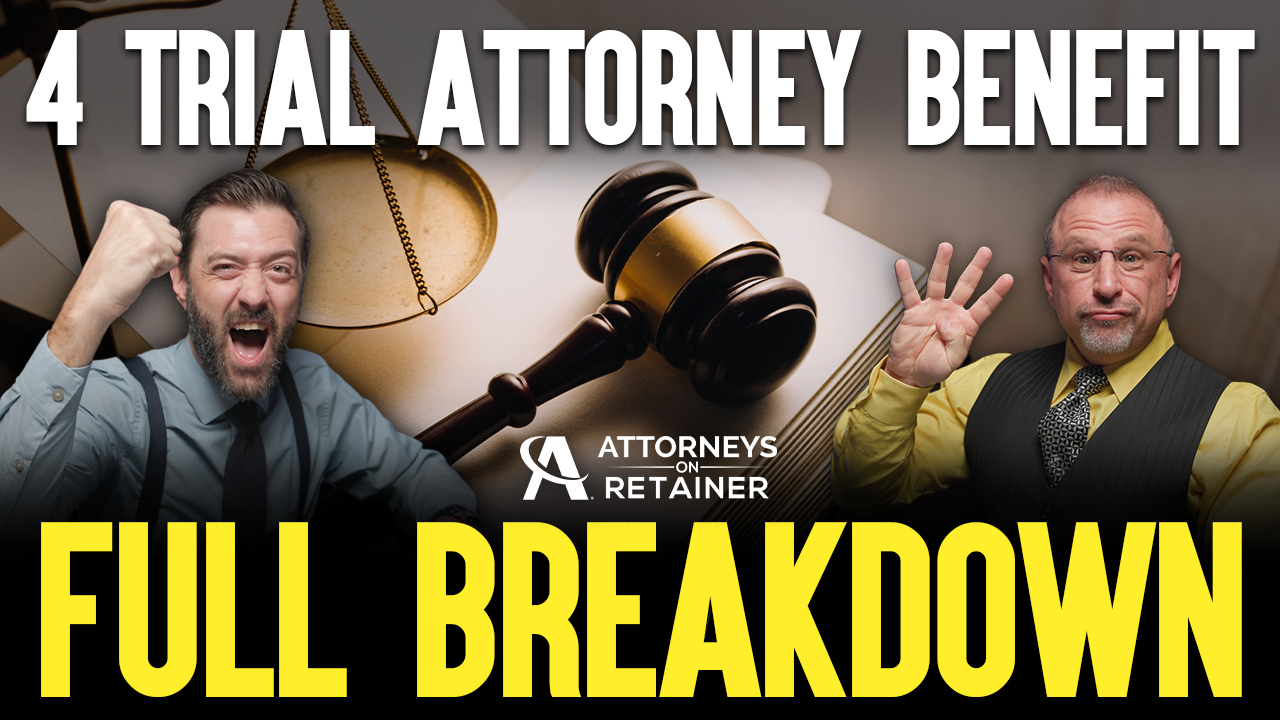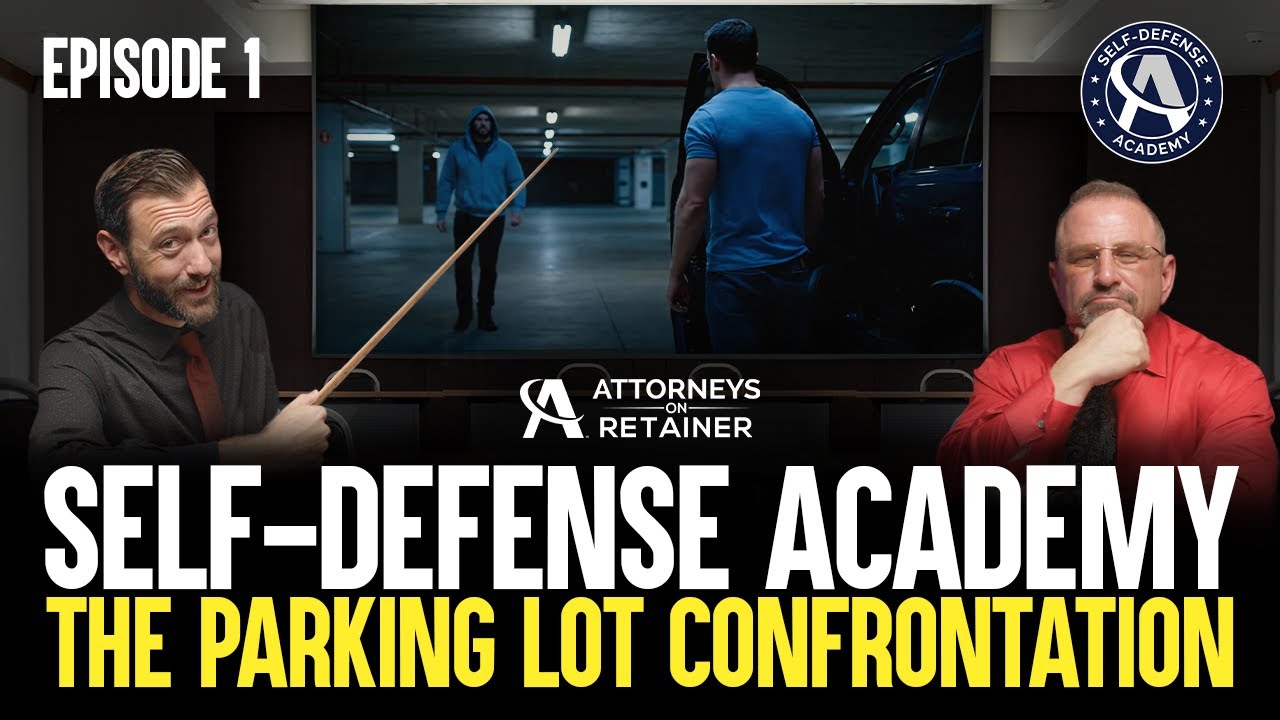The Secrets to Case Analysis You Never Knew!
Sep 1, 2025
Criminal defense attorneys Andrew Marcantel and Joey Hamby sit with Dr. John Black, a law enforcement professional and academic expert in decision-making science. With more than 30 years in special operations and 23 years in law enforcement, Dr. Black provides a unique blend of military, patrol, and courtroom experience.
The discussion centers on a crucial aspect of self-defense law: how individuals make decisions under extreme stress and how those choices are perceived by investigators, prosecutors, and jurors.
The Psychology Behind Lethal Force Decisions
Dr. Black emphasizes that decision-making in deadly force incidents follows psychological and cognitive patterns. He highlights what he calls the “sensemaking space,” which is the mental and emotional environment that exists before the critical moment of making a choice. This space includes all the factors that influence how a person perceives, interprets, and reacts to an immediate threat.
“How do we think of that thing that occurs before the moment of choice that shaped our moment of choice?”
-Dr. John Black
Dr. Black explains that you must look beyond the immediate moment to understand why someone perceives a threat as lethal and chooses to act on it. This involves examining the person’s training, belief system, past experiences, and specific incidents. These factors are crucial because they influence how the individual perceives and interprets the threat. For example, someone who recently saw violence or went through trauma might view an incident very differently from someone who has never been through trauma.
Dr. Black emphasizes that this internal experience is often invisible or inaccessible to external observers, such as jurors or investigators, who do not share the same perspective, knowledge, or situational awareness. Jurors might see video footage or hear testimony, but cannot directly access the decision-maker’s mental state at that moment. Therefore, experts like Dr. Black are crucial to bridge that gap by educating juries on how people think and react in high-stress incidents. Decisions that seem irrational or “wrong” from the outside often make sense to the person in the moment based on their unique sensemaking process.
Enhancing Jury Insight Through Expert Testimony
Dr. Black emphasizes that his main role as a legal expert is educational. He aims to help juries understand the complex and often misunderstood realities behind critical decisions, especially those involving deadly force. He highlights that a common mistake in legal cases is judging actions by their outcome and then working backward to evaluate the decision. This retrospective view tends to oversimplify and distort the intricacy in which split-second choices are made.
To illustrate this, Dr. Black shares real-world examples, including a recent case where a client’s previous exposure to a similar lethal threat greatly influenced their response in a subsequent confrontation just days later. This example highlights how past experiences, training, and psychological factors continuously shape an individual’s perception of danger and their decision-making process.
Kyle Rittenhouse as a Case Study
The conversation explores the Kyle Rittenhouse case as an example to show the legal importance of subjective awareness in moments of perceived threat. Dr. Black and the attorneys highlight that the reasonableness of Mr. Rittenhouse’s actions depends entirely on what he perceived at the moment. For example, Mr. Rittenhouse saw a dumpster fire and witnessed aggressive behaviors like people setting fires and engaging in violence. These observations shaped his view of immediate danger.
Attorney Marcantel highlights that the legal standard does not allow jurors to consider events or background information that Mr. Rittenhouse was not aware of at the time. If Mr. Rittenhouse did not see or interpret certain behaviors or threats, those factors cannot be used to judge whether his response was reasonable. This distinction is important because video footage or media coverage might show details that were outside his line of sight or focus during the incident.
“If Kyle Rittenhouse doesn’t know about it, it is completely irrelevant to the analysis of whether or not he acted reasonably at the time.”
-Attorney Andrew Marcantel
Dr. Black emphasizes the difficulty in distinguishing between what a defendant “could” have seen and what they “actually” saw, as well as how they processed these observations mentally and emotionally. For instance, even if a camera captured a dumpster fire or a chaotic scene, jurors must consider whether Mr. Rittenhouse’s attention was focused on those events and what significance he attributed to them. It is not sufficient for observers or the media to label behaviors as violent or threatening; what matters legally is the defendant’s subjective experience and interpretation.
Understanding Cognitive Biases in High-Stress Incidents
Dr. Black explains that in high-stress, life-threatening incidents, human cognition shifts from slow, deliberate “Type 2 thinking” to quick, instinctive “Type 1 thinking.” Under stress, the brain focuses on survival rather than making the best decision. This leads to “satisficing,” choosing a solution that is “good enough” to handle the immediate threat instead of the optimal choice.
“So let’s call that… satisficing… It’s good enough. I just need the good enough thing that’s going to get me out of this.”
-Dr. John Black
He emphasizes that juries need to understand that split-second decisions occur within a highly emotional and physiological state, where cognitive resources are limited. This state can lead to effects such as tunnel vision, auditory exclusion, and selective attention, all of which influence how a person perceives and recalls events during a confrontation.
Reevaluating Totality of the Circumstances
The attorneys and Dr. Black examine the legal interpretation of the “totality of the circumstances” standard, highlighted by the recent Supreme Court decision in Barnett v. Phillips. This ruling expands the perspective beyond the immediate threat to include the full context leading up to it.
While the standard of “objective reasonableness” remains foundational, it is recognized as a nuanced blend of what a reasonable person could know objectively and what the defendant subjectively believed in that moment. Dr. Black emphasizes that truly understanding why an individual perceives a threat requires insight into their personal history and context. For instance, a person raised in a high-risk environment may detect “pre-attack indicators” invisible to outside observers or video evidence.
“The moment of threat doctrine versus the horizon greater than the moment of threat… how far is that horizon? … Is it what happened to you as a trauma for your three-year-old …?”
-Dr. John Black
Dr. Black emphasizes the risks of making firm conclusions about threat perception without thoroughly exploring the defendant’s lived experiences, training, and psychological condition.
“You focus your attention on that which you consider important. Which also means that you don’t focus your attention on that which is not important. ‘How come they didn’t see this?’ probably because it wasn’t important to them at the moment.”
-Dr. John Black
Integrating Objectivity and Subjectivity in Use-of-Force Analysis
Dr. Black highlights the importance of combining quantitative data, such as timing, distance, and frame rates, with qualitative insights into how people perceive and interpret events. While objective measures provide useful benchmarks, subjective experiences reveal the psychological and contextual factors that influence decisions.
“In the quantitative… my job as the researcher is to remove myself and be the outside observer. And the qualitative, I recognize the fact that I am going to be intertwined with the data.”
-Dr. John Black
Dr. Black emphasizes the importance of collaborative case review and “question storming”—asking exploratory questions before reaching conclusions. This approach enhances understanding, especially in complex cases where certainty is hard to achieve.
Dr. Black also describes his work in forensic video analysis, emphasizing that video evidence should be carefully enhanced, not altered. Even with identical footage, viewers might perceive events differently based on their experience and focus.
“Seeing is believing… The same people will say ‘the video clearly shows’ are the same person that will travel down to Vegas and be tricked by a magician.”
-Dr. John Black
Memory, Bias, and the Ethical Fault Lines of AI in Law
The attorneys and Dr. Black explore how memory distortions, unconscious reasoning, and cognitive bias impact witness reliability and defendant accounts. The conversation then turns to the expanding use of AI in legal practice. Dr. Black advocates for responsible, ethical AI use, while the attorneys raise alarm over a Maricopa County case where an AI-generated video of a deceased victim was shown at sentencing. They argue this sets a dangerous precedent, blurring emotional closure with manipulated evidence.
“This aspect of putting on something that was completely fake, it was just the most startling legal development I had ever seen. And it further increased my opposition to AI in the legal industry.”
-Attorney Joey Hamby
Conclusion
Dr. Black advises getting news and information from sources that challenge your current beliefs to help avoid echo chambers. He also promotes ongoing self-improvement in thinking skills through feedback, open dialogue, challenging assumptions, and exposing oneself to diverse viewpoints.
Finally, they ask viewers to educate themselves and consider joining The Attorneys On Retainer Program (AOR), whose mission is to provide legal defense for individuals involved in self-defense-related incidents. Please call 866-404-5112 or email us to learn more about our AOR Program.



